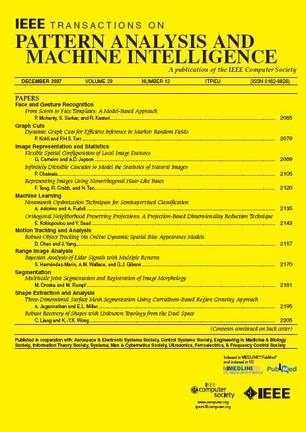MSFA Image Denoising Using Physics-based Noise Model and Noise-decoupled Network.
IF 18.6
1区 计算机科学
Q1 COMPUTER SCIENCE, ARTIFICIAL INTELLIGENCE
IEEE Transactions on Pattern Analysis and Machine Intelligence
Pub Date : 2025-09-16
DOI:10.1109/tpami.2025.3610243
引用次数: 0
Abstract
Multispectral filter array (MSFA) camera is increasingly used due to its compact size and fast capturing speed. However, because of its narrow-band property, it often suffers from the light-deficient problem, and images captured are easily overwhelmed by noise. As a type of commonly used denoising method, neural networks have shown their power to achieve satisfactory denoising results. However, their performance highly depends on high-quality noisy-clean image pairs. For the task of MSFA image denoising, there is currently neither a paired real dataset nor an accurate noise model capable of generating realistic noisy images. To this end, we present a physics-based noise model that is capable to match the real noise distribution and synthesize realistic noisy images. In our noise model, those different types of noise can be divided into SimpleDist component and ComplexDist component. The former contains all the types of noise that can be described using a simple probability distribution like Gaussian or Poisson distribution, and the latter contains the complicated color bias noise that cannot be modeled using a simple probability distribution. Besides, we design a noise-decoupled network consisting of a SimpleDist noise removal network (SNRNet) and a ComplexDist noise removal network (CNRNet) to sequentially remove each component. Moreover, according to the non-uniformity of color bias noise in our noise model, we introduce a learnable position embedding in CNRNet to indicate the position information. To verify the effectiveness of our physics-based noise model and noise-decoupled network, we collect a real MSFA denoising dataset with paired long-exposure clean images and short-exposure noisy images. Experiments are conducted to prove that the network trained using synthetic data generated by our noise model performs as well as trained using paired real data, and our noise-decoupled network outperforms other state-of-the-art denoising methods. The project page is avaliable at https://github.com/ying-fu/msfa denoising.基于物理噪声模型和噪声解耦网络的MSFA图像去噪。
多光谱滤波阵列(MSFA)相机以其体积小、拍摄速度快等优点得到越来越多的应用。然而,由于其窄带特性,它经常遭受光不足的问题,并且捕获的图像很容易被噪声淹没。神经网络作为一种常用的去噪方法,已经显示出其强大的去噪能力。然而,它们的性能高度依赖于高质量的无噪图像对。对于MSFA图像去噪任务,目前既没有配对的真实数据集,也没有精确的噪声模型能够生成逼真的噪声图像。为此,我们提出了一种基于物理的噪声模型,该模型能够匹配真实的噪声分布并合成逼真的噪声图像。在我们的噪声模型中,这些不同类型的噪声可以分为SimpleDist分量和ComplexDist分量。前者包含可以用高斯分布或泊松分布等简单概率分布描述的所有类型的噪声,后者包含无法用简单概率分布建模的复杂色偏噪声。此外,我们设计了一个由简单dist噪声去除网络(SNRNet)和复杂dist噪声去除网络(CNRNet)组成的噪声解耦网络,依次去除每个分量。此外,针对噪声模型中色差噪声的不均匀性,我们在CNRNet中引入了可学习的位置嵌入来表示位置信息。为了验证我们基于物理的噪声模型和噪声解耦网络的有效性,我们收集了一个真实的MSFA去噪数据集,其中包含配对的长时间曝光的干净图像和短时间曝光的噪声图像。实验证明,使用我们的噪声模型生成的合成数据训练的网络与使用配对真实数据训练的网络一样好,并且我们的噪声解耦网络优于其他最先进的去噪方法。项目页面可在https://github.com/ying-fu/msfa上找到。
本文章由计算机程序翻译,如有差异,请以英文原文为准。
求助全文
约1分钟内获得全文
求助全文
来源期刊
CiteScore
28.40
自引率
3.00%
发文量
885
审稿时长
8.5 months
期刊介绍:
The IEEE Transactions on Pattern Analysis and Machine Intelligence publishes articles on all traditional areas of computer vision and image understanding, all traditional areas of pattern analysis and recognition, and selected areas of machine intelligence, with a particular emphasis on machine learning for pattern analysis. Areas such as techniques for visual search, document and handwriting analysis, medical image analysis, video and image sequence analysis, content-based retrieval of image and video, face and gesture recognition and relevant specialized hardware and/or software architectures are also covered.

 求助内容:
求助内容: 应助结果提醒方式:
应助结果提醒方式:


